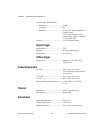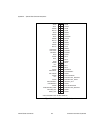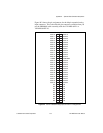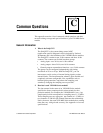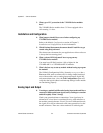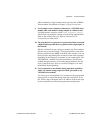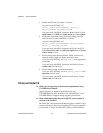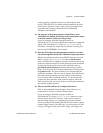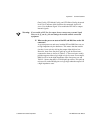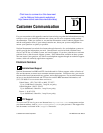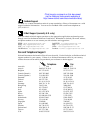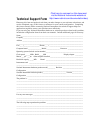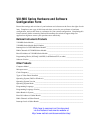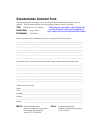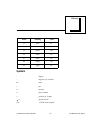
Appendix C Common Questions
National Instruments Corporation C-5 VXI-MIO Series User Manual
analog triggering, selectable logic level, and frequency shift
keying. The DAQ-STC also makes buffered operations possible,
such as direct up/down control, single or pulse train generation,
equivalent time sampling, buffered period, and buffered
semiperiod measurement.
14. I’m using one of the general-purpose counter/timers on my
VXI-MIO Series module, but I do not see the counter/timer output
on the I/O connector. What am I doing wrong?
If you are using the NI-DAQ language interface or
LabWindows/CVI, you must configure the output line to output the
signal to the I/O connector. Use the
Select_Signal
call in
NI-DAQ to configure the output line. By default, all timing I/O
lines except EXTSTROBE* are tri-stated.
15. How does NI-DAQ treat bogus missed data transfer errors that
can arise during DMA-driven GPCTR buffered-input operations?
When doing buffered transfers using GPCTR function calls with
DMA, you can call
GPCTR_Watch
to indicate
dataTransfer
errors. NI-DAQ takes a snapshot of transfers and counts how many
points have been transferred. If all the points have been transferred
and the first instance of this error occurs, NI-DAQ returns a
gpctrDataTransferWarning
indicating that the error could be
bogus. If all the points have not been transferred, NI-DAQ returns
the
genuine error
. The error continues to be returned until the
acquisition completes. The error occurs because NI-DAQ disarms
the counter from generating any more requests in the interrupt
service routine. Due to interrupt latencies, it is possible that the
counter may have generated some spurious requests which the
DMA controller may not satisfy because it has already transferred
the required number of points.
16. What are the PFIs and how do I configure these lines?
PFIs are Programmable Function Inputs. These lines serve as
connections to virtually all internal timing signals.
If you are using the NI-DAQ language interface or
LabWindows/CVI, use the
Select_Signal
function to route
internal signals to the I/O connector, route external signals to
internal timing sources, or tie internal timing signals together.
If you are using NI-DAQ with LabVIEW and you want to connect
external signal sources to the PFI lines, you can use the AI Clock
Config, AI Trigger Config, AO Clock Config, AO Trigger and



